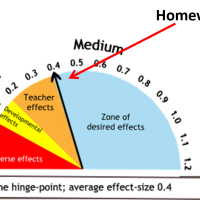Last week Alex Quigley wrote an excellent blog on curriculum development. Alex offers a word of caution to school leaders who are frantically looking to develop their curriculum, in response to OFSTED’s renewed focus:
“A handy short-cut is to consider all of our curriculum changes through the lens of a harried full-time teacher who is snatching at hard-earned windows of time in the corners of their full timetable. It rightly grounds our ambitions in the messiness of real classrooms of tired, hustling teachers.
If we don’t face head-on the significant challenge of teacher development, then our exciting curriculum debates and plans will come to nought.
Slowly, quietly, the majority of teachers in schools will close their classroom door and slip back into doing it as they always have done. Our best intent will simply wilt in the white-hot crucible of the classroom. “
He’s right. Leaders can be mapping out the most rigorous, brilliantly sequenced and superbly coherent curriculum imaginable, but if the implementation of this isn’t aligned with a well thought out and comprehensive programme of CPD to support teachers, to quote Alex, ‘it will come to nought’. The importance of planning a programme of CPD when implementing change is discussed in detail in the EEF Implementation Guide .
This is something we have been mindful of here at Durrington, as we look at reviewing our curriculum (more on this here).
Sharing Curriculum Intent
Once a fortnight, subject teams meet for a ‘Subject Planning & Development Session’ (SPDS). The idea here is for curriculum teams to discuss ‘What are we teaching over the next fortnight and how do we teach it well?’ When these sessions are used effectively, they are a great opportunity to ensure that everybody is on the same page in terms of curriculum intent. For example, there will be discussions around:
- Clarifying and agreeing exactly which aspects of the curriculum will be delivered over the next fortnight.
- Discussing the previous curriculum content that this this links to, so all teachers are exploiting this prior knowledge and students are encouraged to do so as well.
- Discussing how the knowledge taught over the next fortnight will prepare students for future curriculum topics.
- Ensuring that this part of the curriculum is taught as intended e.g. the key learning points are clearly understood; it’s rigorous in terms of high challenge; possible misconceptions that might occur are shared; key vocabulary and how to explicitly teach it is agreed.
- Teaching resources are discussed and shared.
- Ensuring that all teachers in the team have strong subject knowledge in this topic, in order to teach it effectively. Filling any knowledge gaps if necessary.
- Using expertise from within the team to discuss how to teach it really well e.g. rich questions to ask; effective modelling strategies; opportunities to develop metacognition.
Ensuring Consistent Curriculum Implementation
Having discussed and agreed these points at the fortnightly SPDS, Curriculum Leaders will then visit lessons over the next fortnight (as often as is possible). They will use this as an opportunity to monitor that the curriculum is being implemented with fidelity by all teachers – as agreed by the whole team at the SPDS e.g. is the level of challenge right? Is the key vocabulary being explicitly taught? Are the key learning points being emphasised? Are the most effective, evidence-informed teaching approaches being used effectively? Are links to other parts of the curriculum being exploited?
This allows them to:
- Share examples of effective practice that they see with the rest of the team. This is usually done at the next SPDS or as ‘bright spots’ in their weekly e-bulletin.
- Plan follow-up coaching with any teachers who would benefit from some further and more personalised CPD.
- Inform what might need to be covered at the next SPDS.
- Review the curriculum in an ongoing and ‘live’ way.
This seems to be working well as a cyclical model of CPD because it aligns with what the research evidence says about effective CPD. It is:
- Sustained – it happens on an ongoing fortnightly cycle.
- Subject Specific – it is carried out by subject teams.
- Focused – it relates to what they will be teaching over the next fortnight.
- Evidence informed – during the SPDS, teachers are discussing evidence informed teaching approaches.
Curriculum development and teacher development need to be closely aligned, sustained and cyclical. This is necessary because real and authentic curriculum development, that results in change in the classroom, is a long term endeavour – but a very worthy one. This is why it deserves our time, care and attention.
Shaun Allison is Head of School Improvement at Durrington Multi-Academy Trust. He is also Director of Research School for Durrington Research School and will be delivering training on ‘Evidence informed approach to curriculum, teaching and assessment’, ‘Making Every Lesson Count’ and ‘An evidence informed approach to improving science teaching’.












